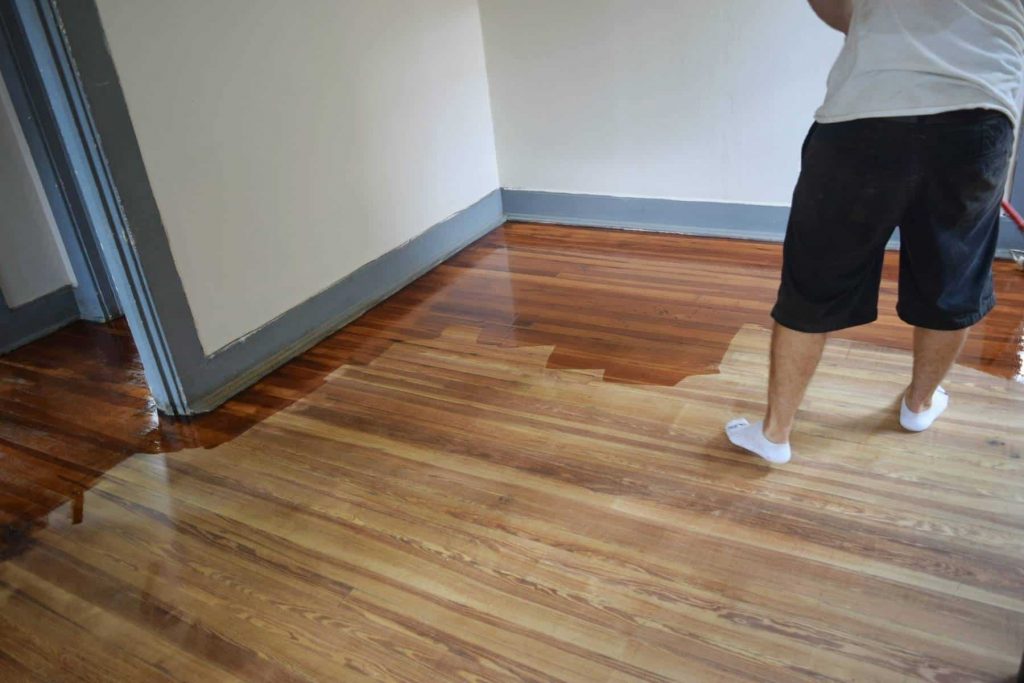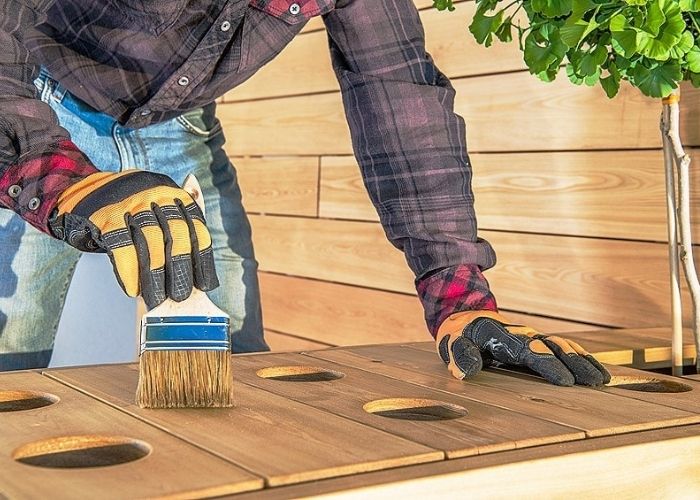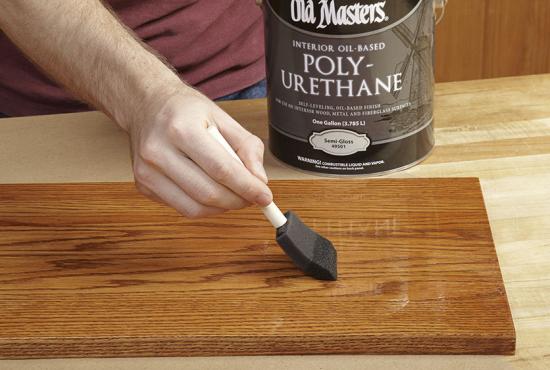Can you put polyurethane over wax? Well, there’s tons of conflicting information about applying polyurethane over wax or waxing over poly.
So you know, polyurethane gives a perfect finish and also offers strong protection to your surface. Wax, on the other hand, does a lot in polishing surfaces. But can you polyurethane over wax?
In this masterpiece, we’ll touch on:
- Drying time of polyurethane.
- Factors hindering drying and curing time of polyurethane.
- Safety measures.
- Advantages of wax.
Let’s get started.
Can You Polyurethane Over Wax?
No, you cannot polyurethane over wax. It will repel polyurethane most likely giving your finish an imperfect look. Besides, you will need to do more work to rectify the mess. Therefore, if your surface is waxed, use mineral spirits to remove the wax first.
Poly vs. Wax
A single protective topcoat is all everyone needs. But there’s always a reason behind applying the two finishes.
About Polyurethane
Oil-based polyurethane is one of the most protective topcoats available and can last for up to 50 years. It dries in less than 24 hours and cures in 30 days. Water-based polyurethane, on the other hand, takes about six hours to dry and 30 days to fully cure.
About Wax
Wax is a paste that cures in 24 hours. It protects your furniture but then doesn’t harden to the capacity polyurethane does.
You must be careful not to place your waxed furniture near heat or redirect sunlight for a long time as they soften quickly.
Wax wears down over time and you will need to re-wax the surface after a few years to regain the soft sheen and buttery-smooth finish.
Dressers and coffee tables may need re-application after ten or more years, while dining tables may be re-waxed after 3 to 5 yrs.
Some people will want the soft sheen and buttery feel of wax and the protection of polyurethane. But, how do you use them both?
Read on.
Poly First, Then Wax

The right way is to apply poly first then wax. In every piece of furniture, wax should always be the last topcoat.
I once painted furniture that cracked after every layer of paint. I then sealed it with polyurethane, but it never stopped cracking. As a result, the furniture piece had wax buildup. This wax buildup never allowed the polyurethane to adhere to the surface properly.
So to apply polyurethane without bubbles on a piece of furniture that has already been waxed before, remove the wax first. You can wipe the wax down with a Trisodium Phosphate solution or mineral spirit.
Pro Tip: Ensure you’re working in a well-ventilated room with your mask and protective gloves to prevent health complications resulting from direct exposure to the finishes.
Also, read our article on “Can you use polyurethane over boiled linseed oil?”
How Long Should Polyurethane Dry Before Waxing?
This question is specific to the drying time for polyurethane under normal conditions. Oil-based polyurethane takes 24 hours to dry. Water-based on the other side takes 6 hours. But you will have to wait for a month for it to cure.
Factors Hindering Drying and Curing of Polyurethane
Polyurethane is a finish with unique qualities. So when talking of drying and curing time of polyurethane, you could be talking of days and weeks.
But, what factors hinder its drying and curing time?
- Temperature and humidity: The drying time is based on 21°C and 70% humidity. Polyurethane will dry faster when the air is dry and the temperature is high. The opposite is true when the humidity is high and the temperature is low.
- State of the surface: You will realize a faster drying time of your polyurethane if your wood surface is raw and sanded. This is because the wood absorbs the first coat fast. Why? Well, upon application of the first coat on a dry wood surface, the wood absorbs it so fast hence the shorter drying time. But for the next layer, it will take a longer time to dry and cure.
- Type of polyurethane formula: There are two different polyurethane formulas – water-based and oil-based. Different manufacturers employ different approaches in the manufacturing of these formulas. Some add oil, while others add drying agents. The inclusion of these components in the formula impacts the drying and curing time of the polyurethane finish. You will realize, the drying time of oil-based polyurethane is longer than the water-based counterparts
- Wood type: Different wood types take different times to cure. Some fail to cure completely, because woods like Rosewoods and other aromatic cedars produce chemicals that will compromise the crosslinking process.
Read more:
What Are the Advantages of Using Wax on Wood?
Waxing a surface with an existing polyurethane finish brings something different all adventurous individuals will want to try out. Wax gives a noticeable finish to your hardwood floors and other surfaces.
Wax gives a relaxed feel and low sheen. Other advantages include:
- High penetration: wax has a high penetration deep into the wooden furniture. In the process, you achieve a perfect wax finish
- Simple to apply: With many years of experience dealing with finishes, wax is the most comfortable and simple to finish.
- The smell: Unlike polyurethane, most wax products have no offensive or irritating smell. Use wax if you are allergic to strong odors.
- Simple to apply: Out of all the finishes I have interacted with as a woodworker, I found out wax is the simplest finish to apply. If you want to apply the finish by yourself, I recommend you go for a wax.
Safety Measures When Working With Polyurethane

Is polyurethane toxic? Yes, it is. However, it will depend on the brand you are using. Now that you are dealing with something toxic, what are some of the measures you will take?
Here are some measures.
- First, make sure you read and pay attention to the safety recommendations.
- While the polyurethane is drying, oil-based formulas specifically do emit smelly toxic fumes. So, you must put on a nose mask as these fumes can cause respiratory complications. The room should be well ventilated to prevent the accumulation of toxic fumes. You can also use water-based polyurethane as they contain less toxic compounds. (Here are the ways to remove the polyurethane odor)
- Do not be exposed for a longer time to the formula during application and when it is starting to dry and cure. A well-ventilated room will always be a safe bet.
- When wet, oil-based polyurethane is flammable. It has oil-based solvents that generate flammable vapor. Therefore, fire sources must be kept away from polyurethane products.
FAQs
1. Can I Put Wax Over Polyurethane?
Yes, you can wax over polyurethane. Polyurethane hardens and lets wax adhere without crawling and forming ridges. Read our wax over poly to find out more details and avoid making mistakes.
2. Can You Put White Wax Over Polyurethane?
You should not put white wax over polyurethane. Wax will not adhere well to polyurethane and can actually cause the finish to become cloudy. Additionally, wax can make it more difficult to clean and polish your floors in the future. If you’re looking for a way to protect your floors, consider using a slip-resistant mat or rug instead.
3. Can You Use Dark Wax Over Polyurethane?
No, you should not use dark wax over polyurethane. The two products have different finishes, and using them together will not give you the desired effect. Dark wax will make the surface of your furniture look cloudy and lackluster, while polyurethane will give it a glossy finish. It is best to stick to one or the other depending on which look you are trying to achieve.
4. How long should mineral spirits dry before polyurethane?
It is always necessary to allow mineral spirits to dry for about 15 to 20 minutes before applying polyurethane.
5. Can You Put Polyurethane Over Paint?
Yes, you can apply polyurethane on painted wood. As long as the paint has fully cured and it’s clean, you can apply both water-based and oil-based polyurethane over chalk paint wax. However, you need to be cautious of discoloration, especially from oil-based polyurethane.
Read also: Can I apply polyurethane over paint?
6. Can polycrylic be applied over polyurethane?
Yes, polycrylic can be applied over polyurethane. However, it’s essential to follow proper preparation steps for successful adhesion. Ensure the polyurethane is cured, and sanded to create a rough texture. Apply thin and even coats of polycrylic to provide additional protection and a clear, protective finish over the polyurethane.
Final thoughts
So far, we have looked at how you can make the best out of wax and polyurethane as they are great finishes for wooden surfaces. However, how you apply them dictates the final outlook.
You cannot use polyurethane over wax as has been discussed, otherwise, you will be disappointed. Make sure that the surface is properly prepared first and you get rid of the wax.
I hope this article on “can you put polyurethane over wax” will be resourceful when dealing with both polyurethane and wax.
Feel free to share your thoughts in the comment section.

